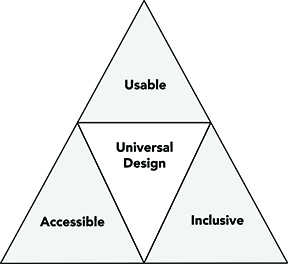Online Learning
Equal Access: Universal Design of Cyberlearning Projects
A checklist for making Cyberlearning projects welcoming, accessible, and usable
The Cyberlearning and Future Learning Technologies (Cyberlearning) program of the National Science Foundation (NSF) supports projects that integrate the capabilities of emerging technologies with advances in what is known about how people learn. These projects advance innovation, the understanding of how people learn in technology-rich environments, and broad use and transferability of new genres.
The Design of Accessible Distance Education Environments That Use Collaborative Learning
Steps Toward Making Distance Learning Accessible to Students and Instructions with Disabilities
Applying Universal Instructional Design to Course Websites By Using Course Evaluations
Distance Learning and Disability: A View from the Instructor's Side of Virtual Lectren
Accessibility Training for Distance Learning Personnel
Equal Access: How to Broaden Participation in Cyberlearning Projects to Ensure Access to People with Disabilities
| Assistive Technology | Therefore |
|---|---|
| Emulates the keyboard, but may not emulate the mouse | Design websites, tools, and software to operate with keyboard alone |
| Cannot read content presented in images | Provide alternative text |
| Can tab from link to link |
20 Tips for Teaching an Accessible Online Course

Captioning Lecture Capture Videos: A Promising Teaching Practice
Students and educators show how captioning videos in a lecture capture application helps everyone gain knowledge.